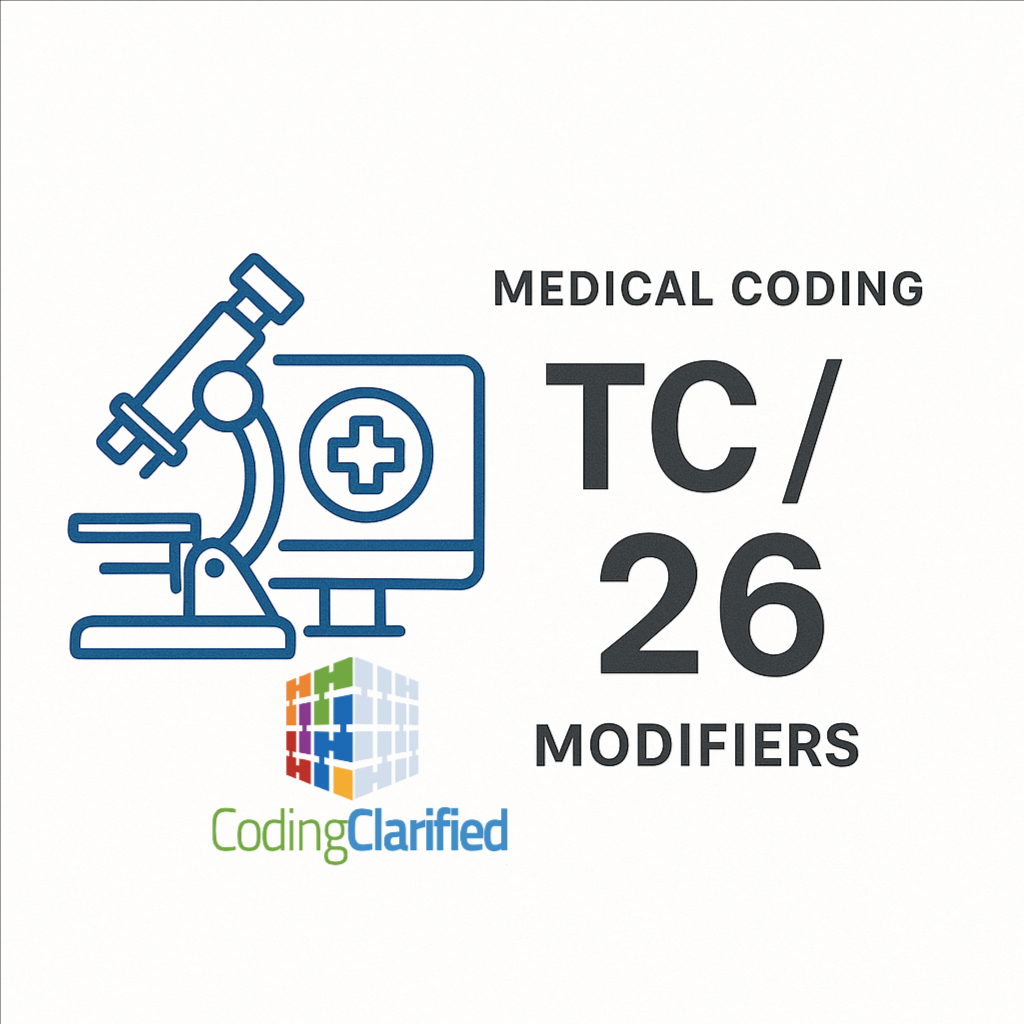Modifier TC & Modifier 26: Guidelines and Tips for Medical Coders
When it comes to radiology and certain diagnostic procedures, understanding the difference between the technical component (TC) and the professional component (26) is essential. These medical coding modifiers (TC or 26) help ensure accurate reimbursement by identifying which part of the service was provided.
Understanding Modifier TC (Technical Component)
-
Definition: Modifier TC is appended when billing only for the technical portion of a service.
-
Covers: Equipment, supplies, and technical staff time (e.g., the use of an X-ray machine, film, and technician).
-
Who Bills It: Facilities such as hospitals, imaging centers, or physician offices that own and operate the equipment.
-
When Used:
-
A provider bills only for the technical component, not interpreting the study.
-
Example: An imaging center takes an MRI scan but does not provide the interpretation report.
-
Understanding Modifier 26 (Professional Component)
-
Definition: Modifier 26 is used to bill only for the professional portion of a service.
-
Covers: Physician work including supervision, interpretation, and report creation.
-
Who Bills It: Physicians or specialists who interpret diagnostic studies but do not own the equipment.
-
When Used:
-
A radiologist reviews the images taken at a hospital or imaging center and provides a written interpretation.
-
The interpreting provider bills with Modifier 26.
-
Global Billing (No Modifier Needed)
-
If the same provider/facility owns the equipment and provides the interpretation, the claim is billed without TC or 26.
-
This represents the global service—both the technical and professional components bundled together.
Common Examples
-
Chest X-ray (71045):
-
Hospital provides the X-ray → bills with TC.
-
Radiologist interprets the film → bills with 26.
-
A physician’s office with equipment and interpretation → bills globally (no modifier).
-
-
Echocardiogram:
-
Cardiologist interprets → Modifier 26.
-
Hospital provides the machine and technician → Modifier TC.
-
Documentation Requirements
-
Modifier TC: Documentation must support the technical resources used.
-
Modifier 26: A signed, dated interpretation report must be included in the record.
-
Global services: Both technical documentation and physician report are required.
Coding Tips
-
Always check payer-specific guidelines. Some carriers bundle TC/26 or require separate reporting.
-
Verify that the CPT code is eligible for split-billing—not all procedures can be divided into technical and professional components.
-
Ensure place of service (POS) matches the modifier usage. For example, a radiologist billing modifier 26 should align with the hospital POS, not their office.
-
Avoid double billing—if both technical and professional components are billed by different providers, each must bill their portion only.
-
Use Medicare Physician Fee Schedule (MPFS) to determine whether a CPT code allows modifiers 26/TC.
Key Takeaway
Modifiers TC and 26 ensure clarity in who is responsible for which part of a diagnostic or radiology service. Coders must carefully review documentation, payer policies, and CPT code eligibility to apply these modifiers correctly. Proper usage helps prevent denials, supports compliance, and ensures accurate reimbursement.
Modifier Dictionary https://www.acep.org/administration/reimbursement/reimbursement-faqs/modifier-dictionary-faq

